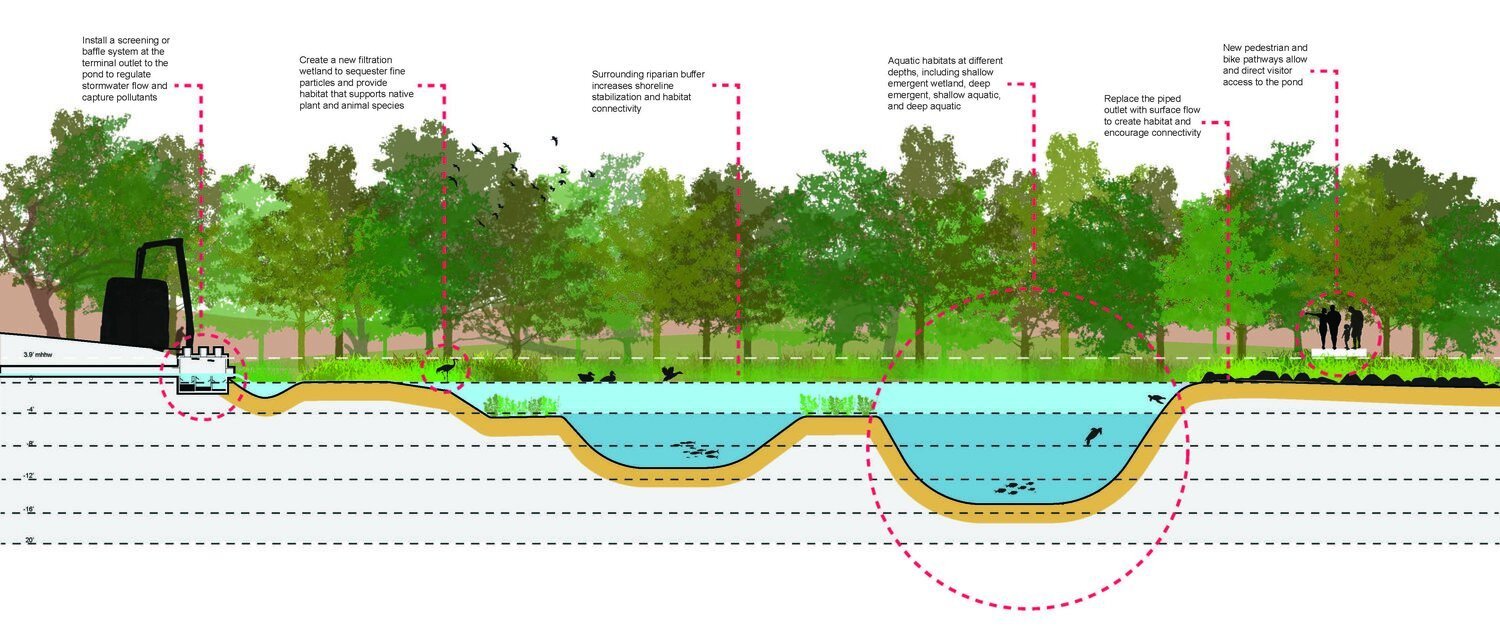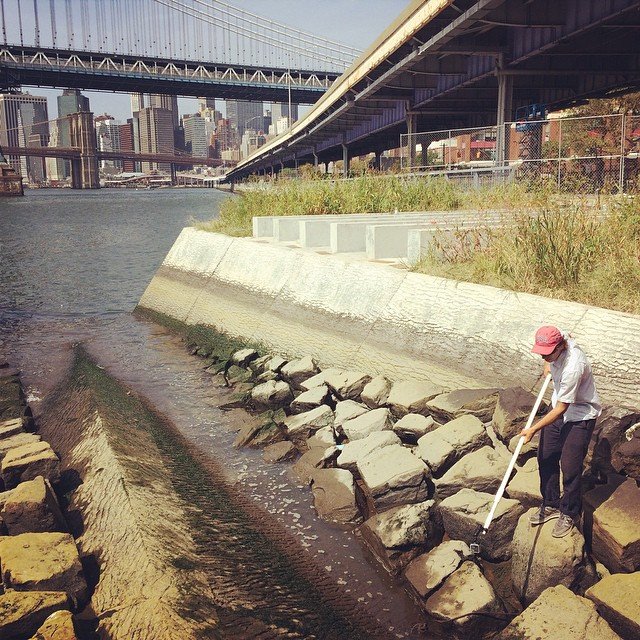
Ecological Masterplans
Natural systems are highly complex, and often require a diverse set of informed perspectives to understand. Add in the physical, social, and cultural impacts of urban systems, and the picture gets even more complicated! At One Nature we work with property owners and land managers to develop comprehensive ecological masterplans for their sites, which are often at the interface of natural and urban habitats. Given that our masterplan projects are large – typically a few hundred acres – they tend to encompass several types of habitat, and thus require rigorous and diversified assessment of current and historical conditions. We research historical documentation, compare old and new aerial photography, conduct natural resource surveys, utilize spatial analysis tools, and talk with a variety of constituents to understand the site thoroughly. Following our analyses, we develop a long-list of detailed recommendations that provide our clients with several options and a vision for the future. These plans are holistic, addressing such varied issues as stormwater flow, habitat connectivity, human infrastructure, sea level rise, climate change, plant and animal diversity, and so on. Our plans are also all designed with sustainability and the future in mind. Instead of thinking in the short term, we work to build ecological legacies that will provide benefits to the biotic community for many generations to come.

Habitat Assessment and Modelling
Our team provides detailed habitat assessments that combine natural resource inventories with spatial analyses and literature reviews. We have extensive experience in a variety of upland and wetland habitats, including forests, floodplains, riparian corridors, intertidal zones, lakes, meadows, and more. Vegetation surveys are provided by trained botanists, who take a detailed account of both native and nonnative species in the tree, shrub, herbaceous, and vine layers. We also use GIS mapping software to provide spatial details that help our team and clients alike understand the habitats in question. Spatial analysis includes elevation, topography, historic land use, flood data, watershed delineation, and more. The data provided by our assessments are analyzed and presented in a way that allows for a shared and collaborative understanding of the habitat’s current condition, as well as its future potential. Our habitat assessments also inform a number of broader projects that range from private landscapes to natural resource impact assessments to large-scale ecological masterplans.

Ecological Restoration
Historic and current anthropogenic activity has resulted in the widespread degradation of all types of ecosystems across the globe. In New York State alone it is estimated that around 75% of forested lands were converted to agricultural lands (NYSDEC 2010). Though the late 20th and early 21st century have seen remarkable recoveries of habitats, a huge amount of degraded land still exists. Even lands that are converted from anthropogenic use to ecological habitat are often dominated by non-native, invasive species, or are fragmented and disconnected from functional ecological corridors. In the context of climate change and increasing urbanization, the need for ecological restoration is as great as it has ever been.
Our ecological restoration projects involve the preservation, restoration, or creation of specific types of habitat, typically on ecologically degraded sites. Our approach to these goals can take on a variety of forms, which blend the creative with the technical. At one site we took a former gravel lot and turned it into a wildflower meadow for only $0.50 per square foot. At another site, we applied a bioengineering restoration design to 6-acres of storm-impacted river bank, which included planting native shrubs, trees, and wildflowers. For each project we take that simple goal – to convert degraded lands to functioning, resilient habitats – and create a context-specific, research-driven plan to achieve that goal. Those plans can involve any number of steps, including invasive species removal, picking out and planting suitable native plants, extensive regrading using heavy machinery, creation of soil layers, redirection of water flows, and more. Whether the habitat is forest or field, stream or marsh, we are equipped to design and implement a plan to restore that habitat.

Environmental Planning
In many areas, periods of systematic deregulation have led to troubling consequences for the environment. Particularly in the modern era, many developers have little regard for natural systems, and anthropogenic activity continues to damage habitats to an untold degree. In many cases, careful and informed planning is the antidote to such recklessness. At One Nature we offer a combination of scientific, design, and regulatory experience to help developers and planners make key decisions regarding their projects. The majority of our environmental planning projects help clients to develop in the most ecologically responsible way possible by thoughtfully addressing the possible impacts of development. In some cases, we work with concerned constituents on cases to prevent or delay development that would harm the environment. In each case, we collaborate with clients to create science-driven, ecologically responsible projects that contribute to a sustainable community.

Agroecology
The application of ecological principles to agricultural systems has gained increasing traction in recent years, especially as more conscientious communities try to envision a more sustainable future. In the past, excessive usage of pesticides and monocultures has led to disastrous consequences for agricultural, natural, and urban systems alike. Today, a combination of old and new wisdom show that mimicking natural systems can have positive impacts on agricultural sites. For example, increasing the biodiversity of wildflowers around fruit trees and shrubs can lead to increased pollinator activity for both the wildflowers and the fruiting plants. In ecological win-win situations like these, a strong understanding of native plants and animals can lead to sustainable and successful agricultural systems.
At One Nature we have worked on many different sites to provide ecologically-minded, site-specific designs that lead to robust and sustainable agriculture. Using input from the farmers or agricultural property owners we work with, we give recommendations for long term land use decisions that benefit both farms and habitats. For example, at a former bee farm in the Hudson valley, we designed a plan to create a hybrid between ecological reserve and agricultural area. Our holistic approach included conversion of wild fields to grassland habitat and hay field, controlled burns to stimulate natural cycles and reduce invasive species, and planting of native species mixtures to promote biodiversity and pollinator habitat.

Forest Management
Forests are a vital component of ecosystems across the globe, and are an especially important part of the cultural and ecological landscape of the Northeast. They provide habitat to countless plant and animal species, in addition to contributing a wealth of ecosystem services that humans benefit from. At One Nature, we understand just how important forests are, and are committed to managing forests for lasting integrity and resiliency. We’ve worked on forest management projects in a number of contexts and scales, from small forests on private property, to larger wooded areas in parks. Our approach to forest management combines scientific research with landscape design principles to create forest landscapes that are both ecologically resilient and aesthetically pleasing.
